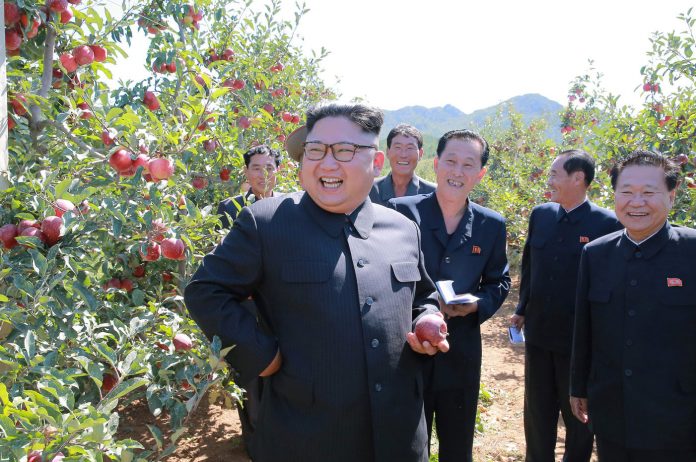
Some of North Korea’s fruit producing regions have fallen victim to “fire blight,” a highly contagious disease that can shrivel and kill an entire fruit tree with a single infection.
A source in South Pyongan Province told Daily NK on July 6 that fire blight had recently hit several orchards in Sukchon County and Pyongwon County, major fruit producing regions. According to him, the disease is withering and killing apple and pear trees “as if they were burned in a fire.”
“The losses are enormous, and there’s a crisis because there’s no way of treating the disease yet,” he added.
Fire blight, a form of bacterial blight, is a dangerous plant disease that withers leaves, stems and fruits, turning them black as if they were burned. Highly infectious with no real treatments available, the disease forces farmers to uproot all the trees within a 100 meter radius of an infected tree, burning them and burying the remains in the ground. Otherwise, they could lose their entire orchards.
The source said the disease spreads so fast that if symptoms appear, farmers have no choice but to burn and bury the entire orchard.
“To prevent further outbreaks, affected orchards cannot cultivate host plants for three years,” he added.
A host plant refers to plants that herbivore insects or caterpillars eat. Since bacteria could survive inside host plants and infect fruit trees, affected orchards cannot cultivate them for a set period of time after an infection. Practically speaking, this renders orchards unable to plant anything for several years.
In South Korea, orchards stricken by fire blight are banned from cultivating host plants such as apple or pear trees for three years. Farmers who fail to comply face up to three years in prison or up to KRW 30 million in fines under Article 47 of the country’s Plant Protection Act.
The source said that North Korea’s fire blight spread from a region that borders China, and that farms are just “waiting around to get hit” because they have no disinfectants to fight it off.
According to South Korea’s Rural Development Administration, fire blight spreads through bacterial mucus secreted by infected trees that mixes with rain and wind, or by insects such as honey bees. It enters infected trees through lenticels and stomata in warm, wet conditions.
The blight could spread widely to nearby areas due to the monsoon rains.
With North Korea’s currently wet and warm conditions, infected trees could secrete the fire blight bacteria in the form of mucus. When rain falls, the bacteria could hitch a ride on the rain water to spread to other trees. Bacteria on clippers, saws, gloves and other farming tools could spread to other trees, too.
This is why pest control and other disease prevention measures are important. Fruit farmers must take care to thoroughly disinfect all their machinery and work tools with alcohol.
However, with pesticides, antibiotics and alcohol in short supply in North Korea, orchards face difficulties in implementing pest control and disinfection practices. In short, farmers appear to be sitting by helplessly as they lose their trees to the disease.
Translated by David Black. Edited by Robert Lauler.
Please direct any comments or questions about this article to dailynkenglish@uni-media.net.

















